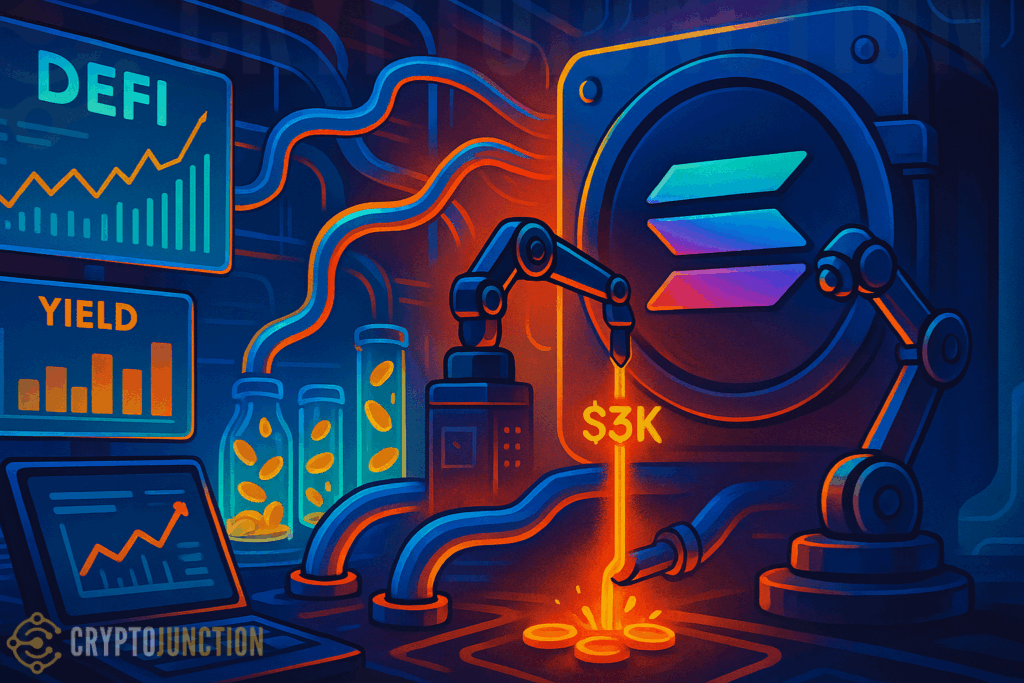DeFi Development Corp (DDC) founded in 2021 has been seeing a daily pull in of about $63,00 of its on-chain holdings. It manages 1.3 million SOL, which at a price point of $140 equals a total of $182 million. This management is entirely in the SOL space. This allows DDC to profit not only from growth in the token value but also from expansive DeFi yield opportunities present in the Solana network.
DDC does not limit itself to just accumulation. The company is actively investing in Solana’s decentralized finance protocols. Concurrently, it carefully balances risk. In that strategy, we have put in place measures to improve returns for our investors. DeFi development corp staff are supporting this growth of the ecosystem.
How DeFi Development Company Produces Multiple Streams Of Yield
DDC reports over $23 million in annual revenue which comes from many yield sources in the Solana network:
- Liquid Staking Rewards — Allocating SOL to liquid staking platforms like Marinade Finance and Lido, which offer 6–8% APY while maintaining token liquidity.
- Lending Market Profits — Providing SOL as collateral or supply on lending platforms such as Solend and Jet Protocol, generating steady interest and fee income.
- Automated Market Maker (AMM) Liquidity — Supplying SOL to trading pools on Raydium and similar DEXes, capturing proportional transaction fees based on volume.
These strategies present an APY of 10.1%, calculated from the present daily yield against total treasury value. It is key that an increase in SOL’s price raises USD revenue. In contrast, a price drop of SOL decreases fiat returns without changing token-denominated yields. Overall, it reflects the strategic efforts of the DeFi development corp management team.
Strategic Risks And Institutional Significance
DeFi Development Corp is a model for what institutional yield looks like on the Solana network. This, in turn, is causing larger corporate treasuries to take notice. However, the approach does come with its issues.
- Smart Contract Risk — Protocol bugs or exploits could impact capital safety.
- Market Volatility — SOL price swings affect USD-equivalent revenue even if token yield remains stable.
- Asset Concentration — An all-SOL treasury leaves DDC exposed to single-asset risk.
Despite the benefits, DDC’s ops improve Solana’s liquidity structure. They also enhance capital flow and trade execution for other network members, including those at the DeFi development corp level. The firm’s heavy stake in staking, lending, and AMM liquidity improves protocol fee collection and trading depth.
Outlook For Solana Treasury Firms
The success of DeFi Development Corp highlights the growing role of specialized treasury management firms in decentralized finance. If SOL’s price momentum continues and DeFi adoption expands, DDC could increase holdings. This would further cement its influence in the ecosystem. By executing at scale and embracing a yield-first strategy, the DeFi development corp shows how institutional-grade operations can thrive on a blockchain like Solana.
In so many ways, DDC’s daily $63K return is not just a number. It is a hallmark that Solana’s DeFi segment sees large-scale capital flow. At the same time, it reports consistent protocol-based returns, as shown in DDC’s investor earnings report.

